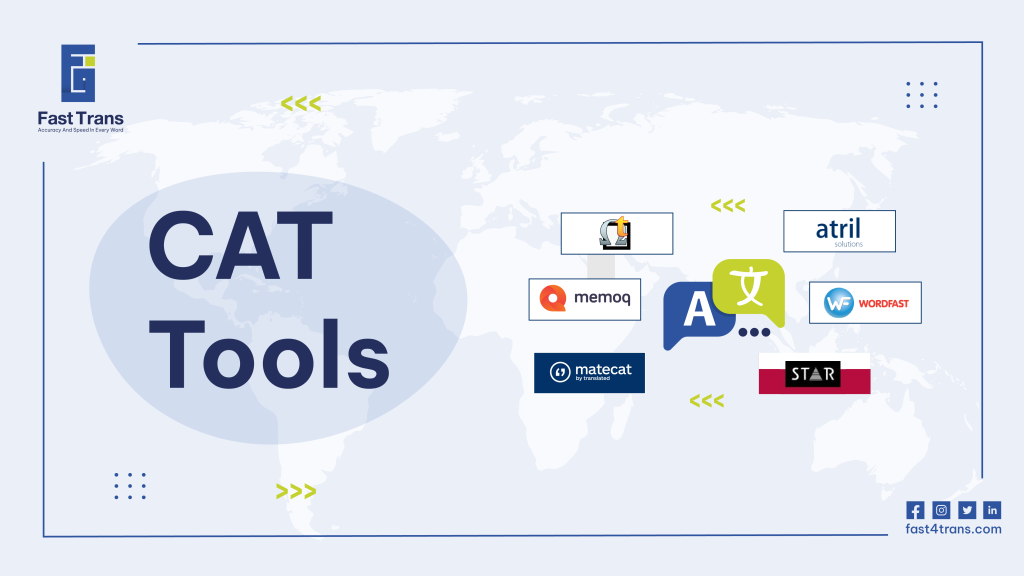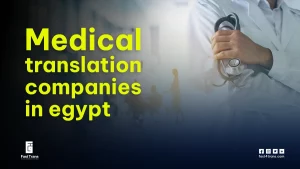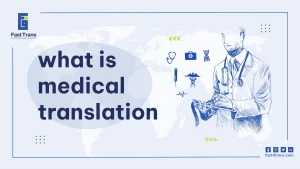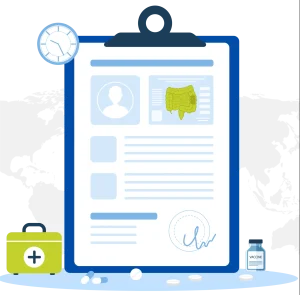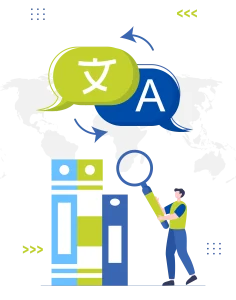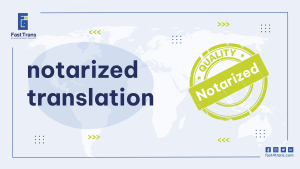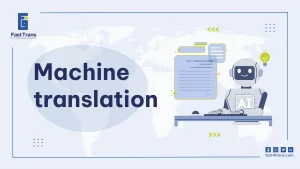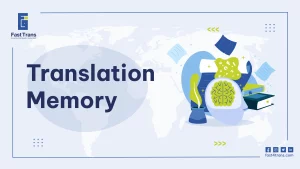Imagine a translator’s digital assistant, meticulously organizing and recalling every phrase they’ve ever crafted. That’s the power of computer-aided translation (CAT) tools, especially vital for the intricacies of Arabic. These clever programs analyze source Arabic text, breaking it down into manageable chunks, and then store each translated segment in a memory bank. Later, like a helpful colleague, the CAT Tools For Arabic Translation suggests or even auto-fills previously translated phrases, adapting to Arabic’s unique grammar and syntax.
Beyond memory, these tools manage specialized vocabulary, offer dictionaries, and even tidy up formatting. For translators, this means boosted efficiency and consistency; for businesses, it translates to cost savings and a library of reusable translations. From MemoQ to OmegaT, these digital partners empower linguists to conquer the challenges of Arabic translation with speed and precision.
What are CAT Tools For Arabic Translation?
A computer-aided translation or computer-assisted translation tool is a software that has been present in various forms in the market ever since the middle of the 20th century. It is made to assist linguists and translators in managing, storing, and editing their Arabic translation tasks.
Fun facts about CAT Tools
- Versions of CAT were seen as early as the 1950s.
- It is made for businesses, organizations, as well as to individual translators to speed up the translation process and be more efficient with their time.
- CAT tools developed from stand-alone software, to operating as client servers on a single network, to being online and cloud-based, as in the present day.
Also a CAT tool is not a substitute for human translation. Unlike machine translation, CAT is there to help, and not to replace.
How does CAT Tools For Arabic Translation work?
A CAT tool works in many marvelous ways to aid the translator, and the usual process for each document in Arabic goes as follows:
Firstly, a CAT tool analyzes the input source text in Arabic to extract only the textual elements that need to be translated.
After doing so, the tool creates a two-column table, one for the source Arabic text and an empty one for the translation. The source text is broken into strings or segments to make the translation easier. There are many calculations as to how it manages to create those segments, one of them being punctuation, like the presence of a comma or a dot, which is crucial in Arabic due to its unique grammatical structure.
Secondly, the tool saves the translation pairs in its Translation Memory (TM). These can be editable at any time and re-saved.
Thirdly, and most importantly, is how the tool manages to retrieve the stored translations. It detects similar matches and auto-fills them automatically, even taking into account the differences in word order and syntactical structure that are common in Arabic.
In so doing, CAT tools analyze, store, compare, and retrieve data, doing what computers essentially do best! In the long run, as the translation memory stores more data, the help of CAT tools will become more efficient, particularly in handling the intricacies and variations of Arabic syntax and grammar.
Why Do You Need a CAT Tool?
In other words, What Are the Benefits of CAT Tools?
If you’re a Translator:
- It handles all the necessary tasks in the source document, leaving only clean text to translate. By using CAT tools you don’t need to worry about formatting.
- Improves the quality and consistency of translation. As a translator you do not need to go over translations you already attempted before, one time is enough, the tool will take of the translation if it is repeated in the future. Which brings us to the next advantage:
- Makes translation a less time-consuming task.
- Allows for team collaboration on a single or multiple projects.
- As a translator, you don’t have to constantly check a dictionary because it keeps a database of terms and words that aid you along the process.
If you’re a company or a business
- Cost-effectiveness, because the more repetitions are found in a source text, the less time the translator will spend on a task, therefore, affecting their rate on the project.
- Creates a database of translations that will come in handy for future use.
- When it comes to highly technical texts, CAT tools help with maintaining consistency which is crucial for that type of content.
- It includes options to customize access for documents, some team members can edit, and others are only allowed to view.
- Most CAT tools are multi-channel, they can be accessed via the app, the web, or via desktop allowing for a flexible working environment.
What are the core components of a CAT tool?
A CAT tool’s core features include Translation Memory for storing and reusing translation pairs, Term Base for field-specific terms, and Machine Translation for automatic translation. Additionally, it offers Text Adjustment for streamlined formatting and integrated Dictionaries for spellchecking and suggestions.
1. Translation Memory
It is the oldest and most developed feature of CAT tools that has two main functions: storing translation pairs and retrieving them when needed in the future.
2. Term Base
It is quite different from translation memory, although both of them are essentially databases, yet, this one works similarly to dictionaries. They store single words or expressions, especially field-specific ones.
3. Machine Translation
Generally, machine translation or (MT) works exactly opposite to a CAT tool. It translates the text on its own without the help of a human translator, while a CAT tool primarily depends on humans, but aids them in the process, without inventing any translations on their own.
4. Text Adjustment
As mentioned earlier, CAT tools only provide the translator with the textual elements that need to be handled, leaving out other distracting elements in a text. It allows for smooth and easy-to-follow formatting.
5. Dictionaries
They are installed to aid in spellchecking, auto-suggesting, retrieving segment fragments…etc.
Types of Cat tools:
Computer-assisted translation (CAT) tools encompass various software types. These include project management systems, automated translation engines, quality checkers, and terminology databases, all aiding human translators in improving efficiency and consistency.
1. Translation Management Systems (TMS)
These are tools that don’t necessarily focus on translation, but on facilitating the projects by assigning tasks and managing resources.
2. Machine Translation Engines
Opposite to CAT tools, they provide machine-attempted translations that are later post-edited by the linguist/translator.
3. Quality Assurance Tools (QA)
These are already embedded in CAT tools. QA looks for errors and scans formatting issues in a document.
4. Terminology Management Software
This is different from the aforementioned (TMS). It refers to software that creates and manages databases of vast language terminologies.
Why are language translation tools important for global business?
Language is detrimental to any ambitious or growing business. When companies want to grow internationally, they need to recraft the entirety of their content to suit another marketplace, appealing to different audiences who have their own tastes, cultures, and preferences. Translation is undoubtedly a leading figure in this process.
Therefore, translation tools, like terminology bases, dictionaries, proofreading, quality assurance, translation memories, machine translations, and all the like provide businesses with quick affordable solutions. They are created by businesses, for businesses.
Accurate localization of your business to another region can do nothing but increase its respect and recognition.
How to choose the best CAT tool for your needs?
Based on reviews from companies, and freelance translators online, the major criteria that distinguish between computer-assisted translation tools out there are cost, user experience and user interface, quality of features with different language pairs, flexibility, and lastly, device compatibility.
Depending on your use, whether you are an organization, a project manager, or a single translator working for clients, the choice will differ, you might sacrifice one benefit for the sake of obtaining another.
Here are some of the advantages and disadvantages of the most popular CAT tools in the market now that you might be considering.
1. MemoQ:
Pros of MemoQ
- User-friendly interface with customizable features.
- Advanced quality assurance.
- Good customer support and regular updates.
Cons of MemoQ:
- Relatively high cost compared to other CAT tools.
- Hard to navigate especially for beginners.
2. Smartcat:
Pros of Smartcat:
- Cloud-based, no need to install software.
- Free for freelancers and small teams.
- Supports a wide range of file formats.
- User-friendly interface.
Cons of Smartcat:
- Some users find the interface cluttered or confusing.
- Limited functionality compared to more established CAT tools.
- Dependency on internet connection for use.
3. Trados Studio:
Pros of Trados
- Powerful translation memory and terminology management features.
- Extensive file format support.
- Advanced project management and collaboration tools.
- Regular updates.
Cons of Trados
- Higher cost, especially for the full version with all features.
- Requires a significant investment of time to set up and customize.
- Compatibility issues with certain operating systems or software.
4. Wordfast:
Pros of Wordfast
- Affordable pricing.
- Easy to learn and use, especially for translators familiar with Microsoft Word.
- Good integration options with other software and platforms.
Cons of Wordfast
- Some users report occasional bugs or compatibility issues.
- May not be suitable for large-scale or complex translation projects.
- Limited support for certain languages and language pairs.
5. OmegaT:
Pros of OmegaT
- Free and open source, accessible to all users.
- Lightweight and fast, with low system requirements.
- Good support for translation memory and glossary management.
- Customizable with plugins and scripts.
Cons of OmegaT
- Limited advanced features compared to commercial CAT tools.
- Dependency on Java, which can lead to compatibility issues.
Video link: https://www.youtube.com/watch?v=nbxBV_7QEyk
Conclusion
Computer-assisted translation (CAT) tools are specialized software designed to support translators in managing and refining their Arabic translation work. They streamline the translation process by analyzing source texts and breaking them into segments, allowing for easier translation while maintaining consistency across projects. These tools utilize features like Translation Memory (TM) to store and retrieve previously translated segments, ensuring that repeated content is translated efficiently and accurately. With advancements from standalone software to cloud-based systems, CAT tools have become invaluable for businesses, organizations, and freelancers, offering time-saving and quality-enhancing benefits.
These CAT Tools For Arabic Translation not only assist with the technical aspects of translation but also help maintain consistency, especially when working with complex languages like Arabic. Key components include Translation Memory, Term Base, and integrated machine translation, all of which work together to support translators in delivering high-quality, consistent results. Additionally, CAT tools provide essential features such as dictionaries, text adjustment for smooth formatting, and quality assurance checks to minimize errors. For businesses, these tools facilitate faster project completion and cost savings, particularly when dealing with repetitive content or large teams collaborating on translation projects.

